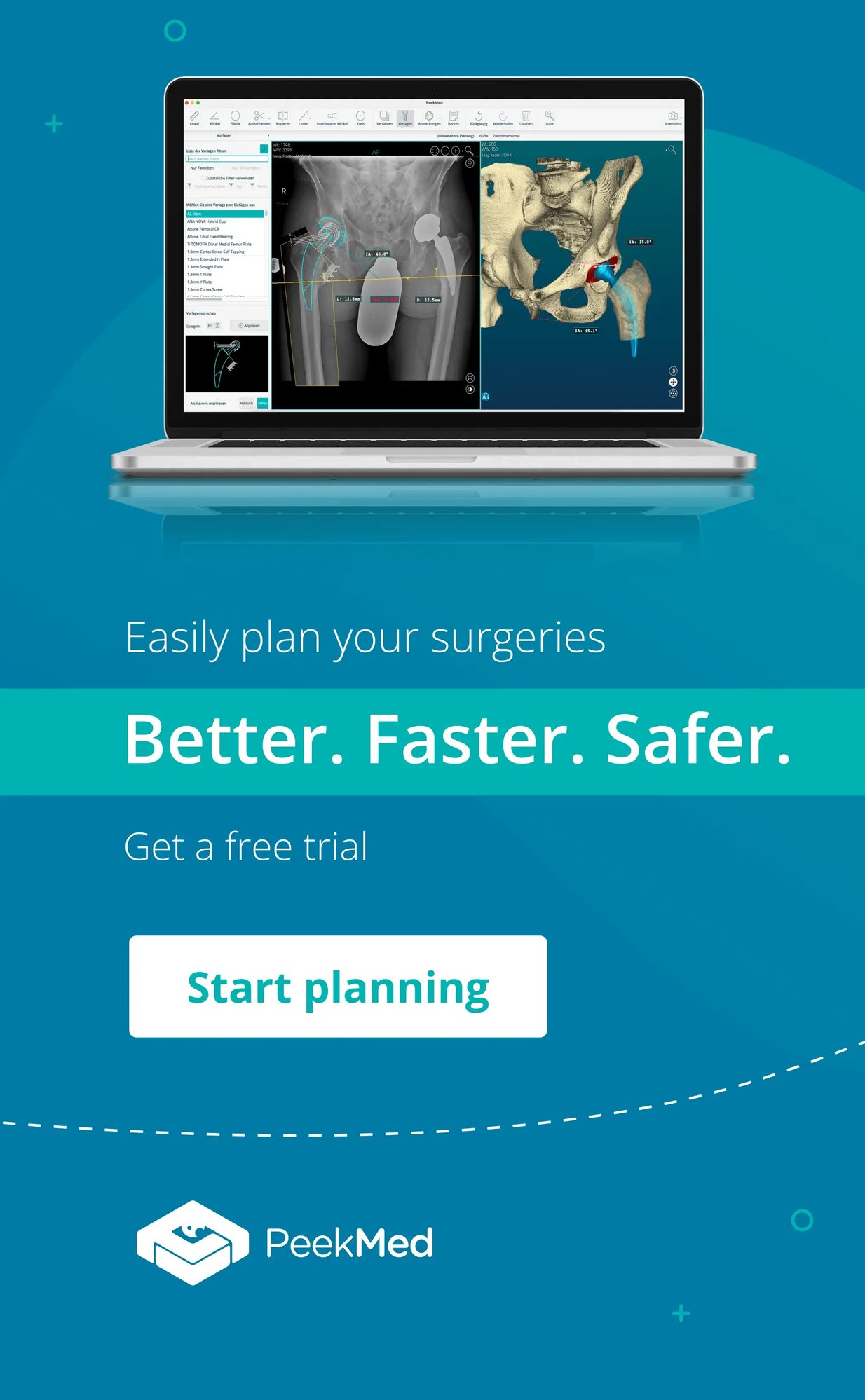PeekMed
Why would a young person need hip salvage surgery – and why not? Truth is, while this might be common, hip replacement in young people is a delicate topic.
While it is possible, there might be special post-total hip arthroplasty precautions to be taken into account in younger people.
Thus, orthopedic surgeons might be more or less conservative regarding this fact when performing the procedure.
The main concern of hip arthroplasty complications is that high levels of activity, which are more common in young patients, are among the factors that increase the risk of mechanical failure and wear and tear situations.
Hence, total hip arthroplasty (THA) or total hip replacement complications related to surgery include limitations on the daily activities (especially after bilateral total hip arthroplasty) of the patient and life not being completely pain-free.
As such, even when all the arthroplasty hip precautions are followed, problems may arise. In younger patients, new surgical procedures might be needed.
Hip salvage has been proposed as an alternative to hip replacement in young patients because:
- Hip replacement prosthetics often last less than 20 years. Hence younger patients benefit from them but may need a second surgery.
- Hip salvage focuses on saving as much of the hip as possible. Thus it has fewer risks than joint replacement surgery
To go deeper into how a young hip salvage surgery could be an option over a hip arthroplasty, we’ve prepared a real case study.
Case study on why perform a Hip Salvage
In this case, the patient is a 28-year-old female patient who had suffered a femoral neck and shaft fracture.
After analyzing the images and the already performed hip implants, using PeekMed, it was possible to correctly identify the need for a varus deformity correction.
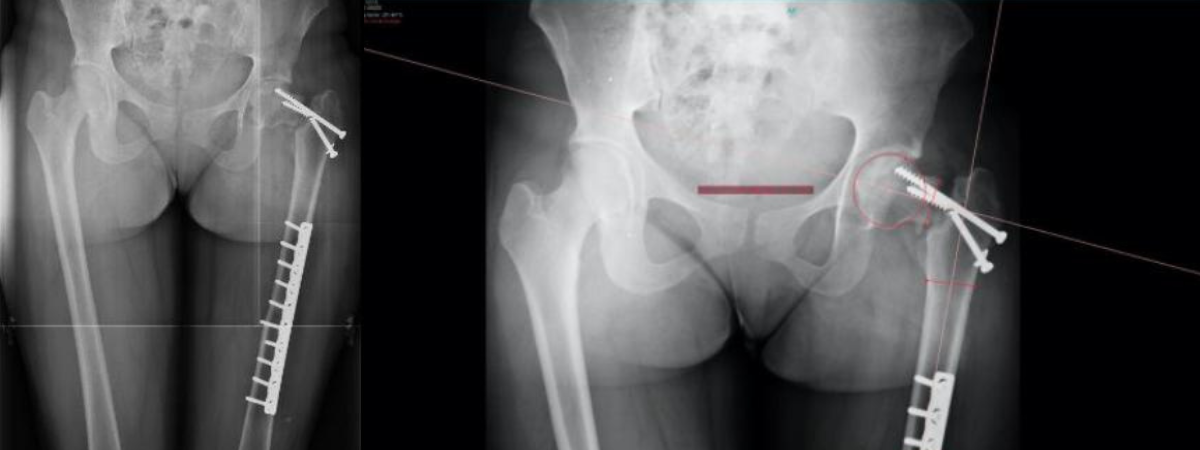
Weight-bearing x-ray shows the failed proximal fixation and varus collapse of the proximal femur.
Additionally, a 2 cm shortening was also present on the affected side.
In these cases, hip preserving surgery is preferred over joint replacement surgery, given the problems associated with multiple future revisions with hip arthroplasty and patients' age.
In this specific case, a valgus osteotomy was planned using PeekMed, as it allows the surgeons to gain detailed information regarding how the hip salvage arthroplasty might be performed, before even entering the operating room (OR).
Thus, using high-end technology, PeekMed allows surgeons to transform vertical sheer forces into compressive ones by pivoting the fracture site to the weight-bearing axis.
Additionally, lengthening is also achieved by correcting previous leg length discrepancies.
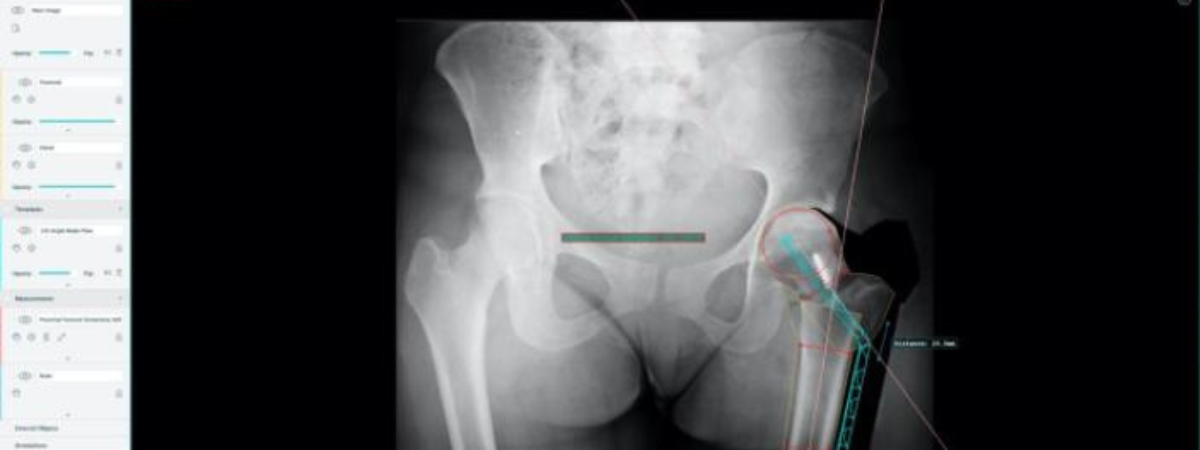
Intraoperatively, the preoperative plan was executed and fully achieved, restoring the biomechanical factors that led to the previous failure.
The hardware applied on the hip joint removal was not complete as only a lateral approach was utilized.
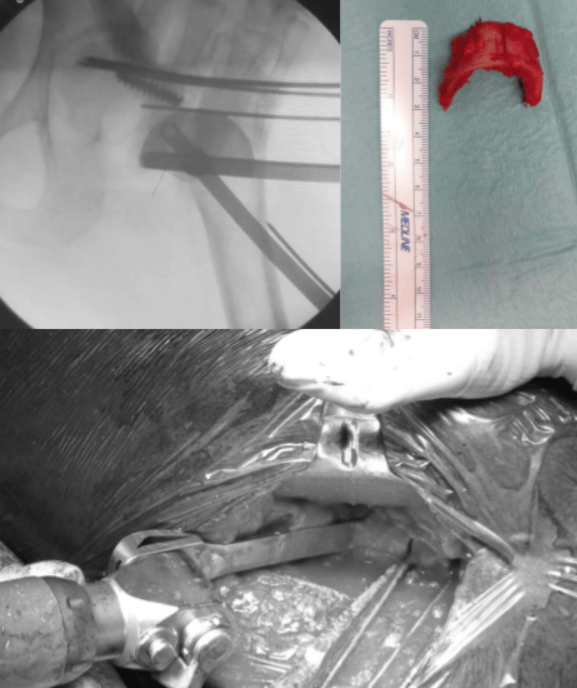
Further approaches could jeopardize the femoral blood supply and weren’t deemed necessary.
The neck shaft angle was corrected to 135º and union was achieved 6 months after the hip procedure.
Leg length discrepancy was corrected and no avascular necrosis developed within two years of follow-up.
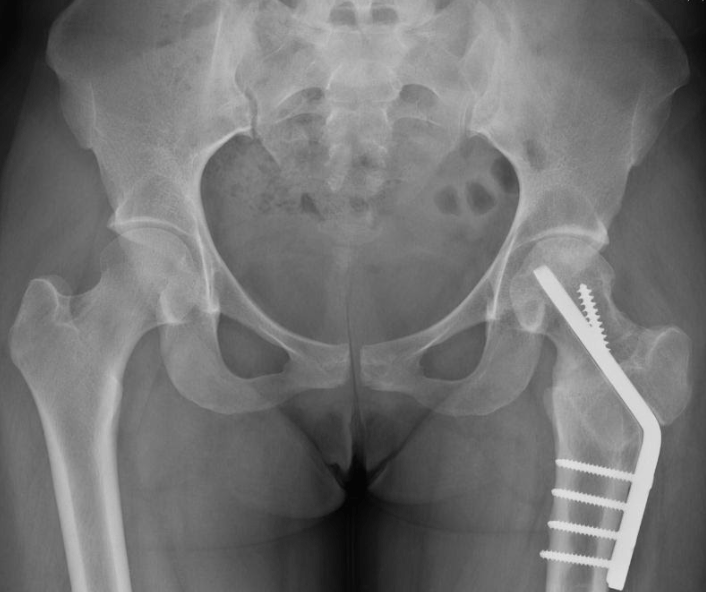
But getting back to the beginning:
Hip replacement in a young patient: choosing the best approach
Answering our initial question regarding why would a young person need hip replacement surgery, the reality is that there is no direct answer.
Difficult cases do not always have a straightforward solution. That’s why preoperative planning is so important.
With extensive preoperative planning, success can be achieved as is demonstrated in this case.
This is a transversal idea that applies to several orthopedic surgical procedures, such as hand, hip, and knee.
With a good preoperative templating tool surgeons can measure, template, and simulate the expected results of different kinds of surgery. Thus, allowing you to predict what items you will be using.


